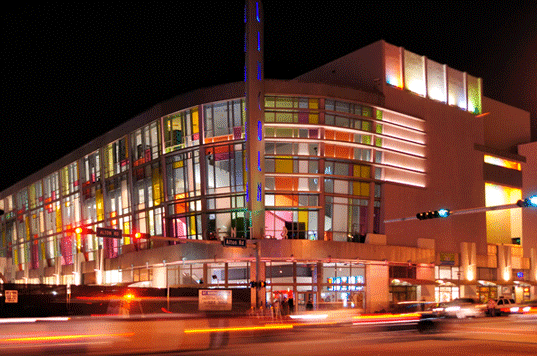From Funky to Fashionable: Lincoln Road Goes Glam … Again!
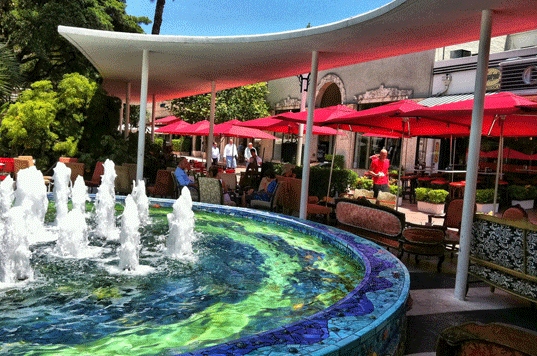
South Beach’s Lincoln Road Pedestrian Mall used to be a tough sell to visitors. Perfectly reasonable friends would turn petulant, saying things like “How exciting can a road named after a dead president be? We don’t want to go to a road – we want to go to a drive, as in Rodeo or Ocean Drive. A road? A mall? Pedestrian? Please, no.” All that has changed since Lincoln Road recaptured its former gloss and glamour. It’s no longer a local secret, the stepsister to sexy Ocean Drive. But, the path to its present star status was full of twists and turns.
Miami Beach was once a forest of mangroves and Lincoln Road, nestled within it, a Tequesta Indian trail. In 1912, real estate developer Carl Fisher cleared the area, naming the new road after one of his heroes. Connecting the ocean and the bay, Lincoln Road became the town’s social center and, later, a magnet for upscale retail, like Bonwit Teller and Saks Fifth Avenue. There were Cadillac and Packard car dealerships and five movie theaters, including the Caribbean, with a retractable roof and live parrots in the lobby.
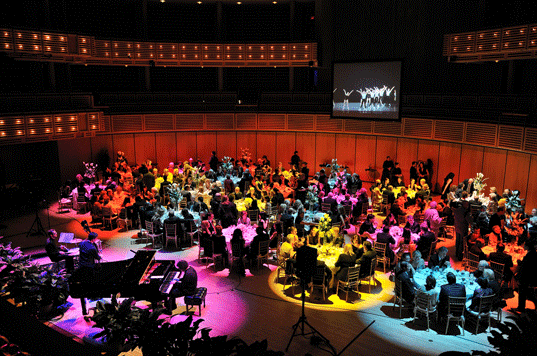
By the 1940’s, Lincoln Road enjoyed a reputation as “The Fifth Avenue of the South.”
But then in the 1950’s its prosperity was eroded by changing times, both financial and cultural. New and glamorous self-contained resorts, such as the nearby Eden Roc and the Fontainebleau created the famous “Golden Mile” and were a big factor. Why leave your hotel when everything you needed was just outside your door?
Thinking way outside the box, the president of Lincoln Road Merchants’ Guild, Hal Hertz, managed to convince 109 shop owners that reinventing Lincoln Road as a pedestrian mall was the only way to survive. They commissioned Morris Lapidus, ironically the architect of the Fontainebleau and Eden Roc Hotels, to redesign the Road. Using his signature Miami Modern (MIMO)) design elements, Lapidus created gardens, fountains, and even a band shell. His blunt response to skeptics of the carless mall was “A car never bought anything.” In 1957, Miami Beach closed the Road to traffic from Washington Avenue to Alton Road, and in December 1960, Lincoln Road began a new life as an open air pedestrian mall, only the second in the U.S. It was not an instant success. The opulent Bal Harbor retail mall, which opened in 1965 a fewmiles further north of the Golden Mile, was a definite setback.
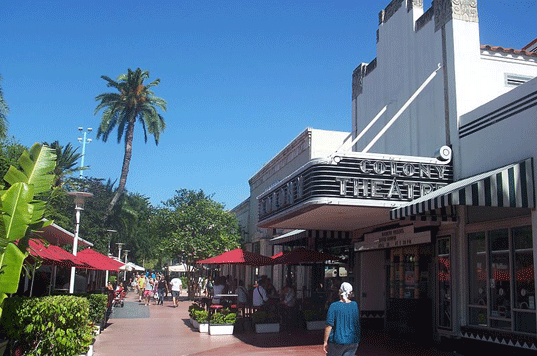
In the ‘90s Lapidus and other architects restored many of the handsome commercial buildings that can be seen today, including the Chase Federal Savings and Loan, the Sterling Building, and the Albion Hotel. The newly refurbished Lincoln Road Mall had a European, bohemian flavor, with small, independently owned sidewalk cafes, art galleries, and quirky shops, including one that filled its windows with mechanical monkeys … just because it could. In the evenings, the streets were filled with local musicians, and there were art walks every other Saturday night. Lincoln Road was just coming into its own as a tourist destination, and South Beach real estate hadn’t yet boomed (or busted).
Things heated up, as they do in the tropics, and as retail rents skyrocketed many smaller businesses fled off the beach. The little art movie house at the end of a foliage filled arcade was jettisoned for a multiplex at the west entrance to the Mall at Alton Road. The Miami City Ballet studio, where delighted passersby could watch rehearsals, decamped for a new location near the Bass Museum a mile or so to the north. A wave of global but mostly affordable brands, such as the GAP, Williams Sonoma, Pottery Barn, Victoria’s Secret, Anthropologie and several Starbucks filled the vacancies. Several of these global brands customized for the hip location. The Lincoln Road location of J. Crew is one of three stores in the country showcasing their more upscale line. Crate & Barrel’s hip CB2 store is one of only six. It was just a matter of time before Swarovski established a bricks and mortar presence showcasing some of their more fashion forward collections.
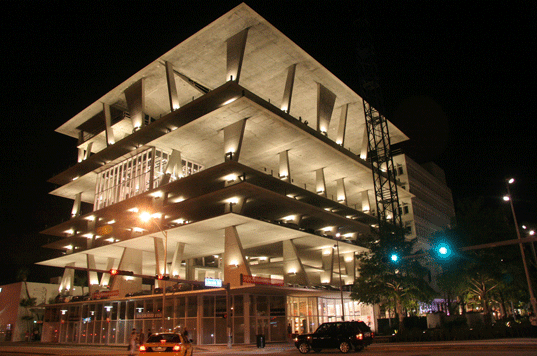
Other commercial spaces had interesting metamorphoses. A house of worship was converted to several trendy restaurants, one owned by Michael Caine and the other known by one word, like certain celebrities. This was converted to the British import AllSaints, whose antique sewing machine-filled interior and urban fashion contrast sharply with colorful, scantily clad shoppers. Similarly, the old Cadillac dealership morphed into a restaurant then became a Guess; the landmark exterior with its vintage bas relief signage above the door remains. Banana Republic renovated the former Chase Federal Savings and Loan, a 1947 deco style building, leaving the façade intact and converting the vaults into dressing rooms.
In January 2010, Miami Beach officially opened the last block of Lincoln Road Mall, which now extends more than eleven blocks from Washington Avenue to Alton Road. At Alton, the Mall’s western end, are two eye-catching buildings facing each other: the retro-looking Regal movie complex with its multi-hued windows, and 1111, a bold “skinless” Herzog & de Meuron-designed mixed use parking garage complete with a small commercial hub at street level and one high profile apartment at the pinnacle. What had been just a simple thoroughfare between the two buildings has now been transformed into a dazzling plaza by award winning landscape architect, Raymond Jungles, its sculptural forms of hanging Spanish moss and man-made ponds reminiscent of Lincoln Road’s early ecology.
The new generation of retail in the Herzog & de Meuron building includes luxury brands Taschen, Osklen, Colterti, Journelle and Alchemist. The latter offers haute couture from a lone glass aerie on the fifth floor of the garage. On the ocean facing side of the building is Juvia, a beautiful penthouse restaurant accessible by private elevator, with stunning ocean and bay views and a large outdoor patio anchored by French architect Patrick Blanc’s green, living wall.
Last year, in another starchitect coup, the world renowned and locally beloved New World Symphony moved its venue in the landmark Art Deco Lincoln Theater to a new Frank Gehry-designed campus, the New World Center, just around the corner. A 7,000 square foot screen with state of the art acoustics makes al fresco viewing available for select concerts and movies. The Lincoln Theater, built as a movie theater in 1939, is now being converted to a mix of retail anchored by H & M, restoring some of its original features in the process.
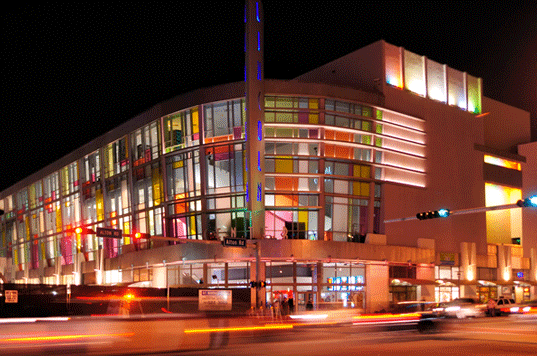
Not everything on or just off Lincoln Road is shiny new. Popular vestiges of the past include the renovated, seventy-five year old Colony Theater, formerly the Caribbean, which hosts an eclectic mix of dance, theater, live music and film. Art Center South Florida, which provides studio space for emerging artists, is open daily and hosts special exhibitions. The outdoor art deco antiques and collectibles market continues on alternate Sundays from fall through the spring. People watching from myriad sidewalk cafes remains a popular pastime.
A savvy survivor, independent bookstore Books and Books, remains but relocated to the back corner of a covered arcade past the café tables of its eponymous restaurant (the original mall side now housing a Diesel store). Fly Boutique, formerly on but now right off the Road, is still the place to go for vintage finds, both men’s and women’s. An international crowd of hipsters descends daily, practically 24/7, on decade-old Segafreddo’s outdoor lounge. Van Dyke Café, once Carl Fisher’s real estate office, serves up both food and live music, while Yuca offers Nuevo Latino cuisine and salsa lessons. Just past the showcase windows of Mayor’s Fine Jewelry, Frieze’s dancing cow sign is still a siren for home-made ice cream. Oprah Winfrey discovered what locals already knew: Ice Box (the restaurant)’s desserts are to die for. Locals and tourists in the know flock to Balans for breakfast, Spris and Tiramisu for “beat the clock” specials, Zeke’s Beer Garden for cheap beers, and David’s Café’s takeout window for a jolt of high octane Cuban coffee.
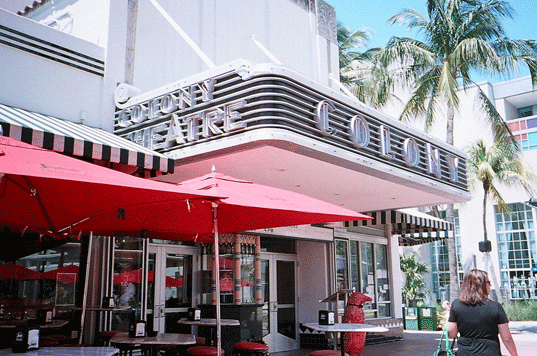
A charming anomaly is the Miami Beach Community Church at the corner of Drexel Avenue close to the eastern end. Dedicated in 1921, it still beckons passersby with its bright white exterior and glowing stained glass windows. On quiet Sunday mornings, chiming church bells, splashing fountains and exotic foliage create a feeling of timelessness on ever-changing Lincoln Road.
From swamp to southern shopping mecca, from shabby chic to simply chic, Lincoln Road Pedestrian Mall has come a long way and today, is anything but pedestrian!

